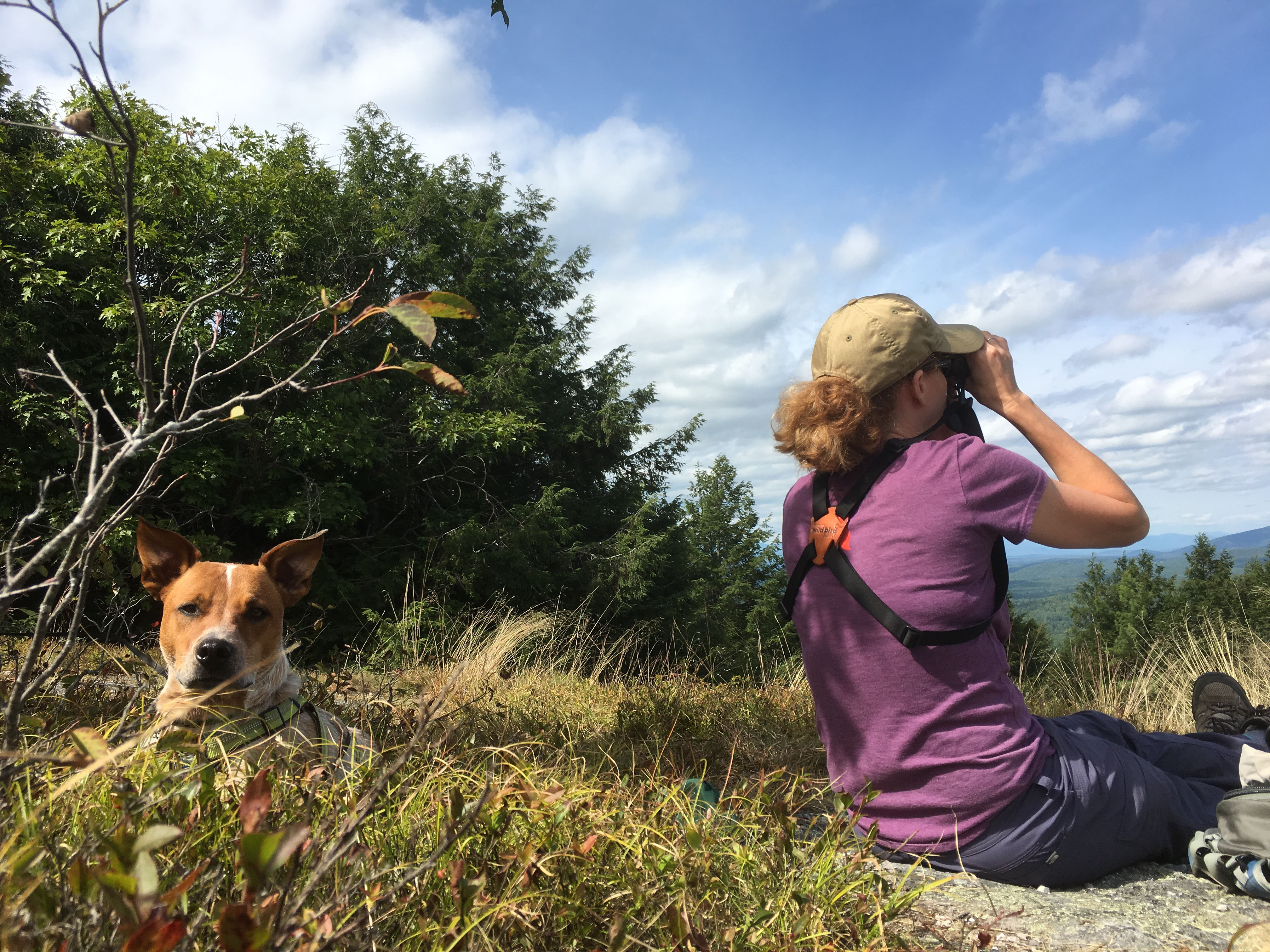
For several years now, Jeannette and I have been searching for a fall hawkwatching location away from the coast in southern Maine. While there are several good concentration points in the area, we were looking for an inland hill or ridge well off of the coastal plain that was relatively convenient, accessible without too much hiking, and most important: consistent – a place where even on a “slow” day, at least a few hawks might be seen.
Along the coastal plain, large numbers of hawks can sometimes be seen. But it’s often fairly random: you just happen to look up at the right time in the right place. In fact, our biggest fall hawk flights – by far – have been right over our store here in Freeport. Those (especially the 7,000+ bird day a few years back) have been some great flights, but most days would not produce a single migrant raptor – there’s no concentration mechanism along most of the southern coastal plain (the peninsulas of the Mid-Coast are a different story).
But we’ve been looking for an “old-fashioned” inland ridge, where a variety of conditions will produce birds, and the chance of close birds (unlike most coastal sites) and rarities (like Golden Eagle and perhaps consistent Rough-legged Hawk or Northern Goshawk) might occur.
Well, we very well might have found one!
Yesterday, Jeannette and I hiked up Mt. Cutler in Hiram, Maine, about 1:15 away from us in the southeastern corner of Oxford County. A steep but rather short hike of less than a mile delivers you to the 1,232ft summit. But we actually returned to a clearing at 0.82 miles up the North Trail from the parking area on Hiram Hill Road.
Impressive views extend on both sides.
To the west, you can see the foothills of the White Mountains.
To the east-southeast, the hills and ridges on the west shore of Sebago Lake. And down below, the Saco River valley.
That’s a nice mix of geography to usher birds to a relatively long (for this area of the foothills) ridge running northeast to southwest.

No sooner had we put down our backpacks and tied Bonxie to a tree, we looked up and immediately starting seeing raptors. Soon, we very much regretted not having arrived earlier; we didn’t start scanning the skies until 11:22.
But by our departure at 2:30pm, we tallied 236 migrant raptors of 7 species. This is not an epic flight by any stretch of the imagination, but how many did we miss before we arrived? A light WNW wind and a thin layer of cirrus clouds were perfect for producing a hawkflight here. And we were excited to finally get the right conditions on a day off to try a new hawkwatching locale. We hiked here about two years ago and thought it would be worth coming back during fall hawk migration season, and it’s been on the agenda ever since.
More importantly, we believe, was that even after the winds shifted to the unfavorable south-southwest by 12:50 pm with increasing clouds, we still had birds moving. Instead of soaring high in kettles though, they were gliding by in a slow trickle, using the lift generated by the steep ridge and headwind. This suggests that raptors seek out Mt. Cutler specifically for geographical or aerodynamic reasons, and therefore our flight was not just a lucky random occurrence. The diversity of non-raptor migrants also adds more credence to our hypothesis.
Of course, one day a hawkwatch does not make. Our data set is far too small to draw any conclusions other than it’s worth going back up here again. And you know we will! I’ll report what we find, but in the meantime, if you give it a try, please let us know what you see.
Here is our scorecard:
203 Broad-winged Hawks
9 Ospreys
8 Bald Eagles
8 Turkey Vultures
6 Sharp-shinned Hawks
1 Cooper’s Hawk
1 Merlin
T=236
Other migrants:
38 Monarchs
11 large dragonfly species
3 PURPLE MARTINS (late and intriguing sighting; could they be related to the passage of Hurricane Dorian that deposited a large number of martins in Nova Scotia, where they are a vagrant).
2 Green Darners
1 Common Loon
1 Double-crested Cormorant
1 Eastern Kingbird
1 unidentified warbler
1 Twelve-spotted Skimmer
1 Red Admiral
10/14/2020:
Well, we finally had a day off with favorable conditions!